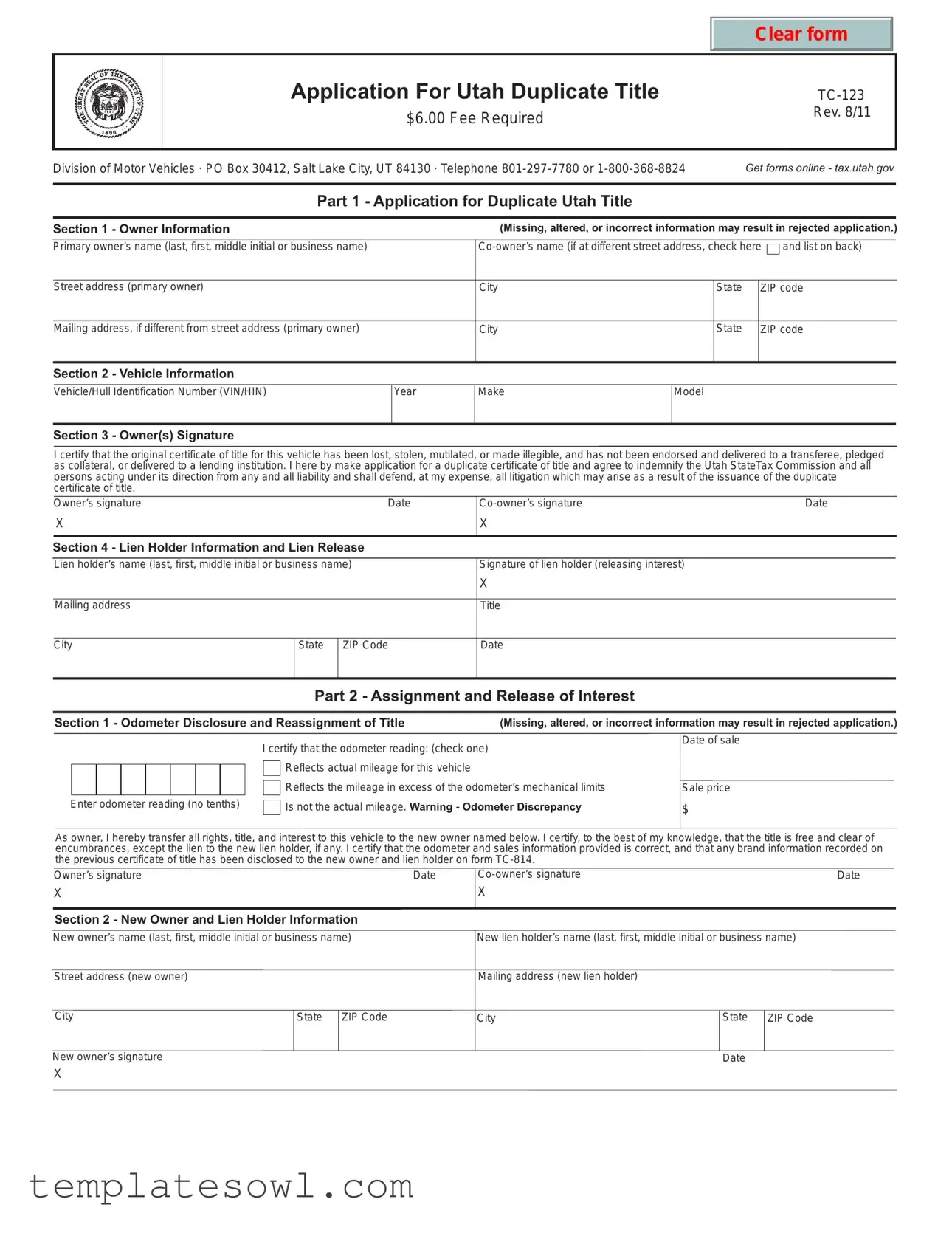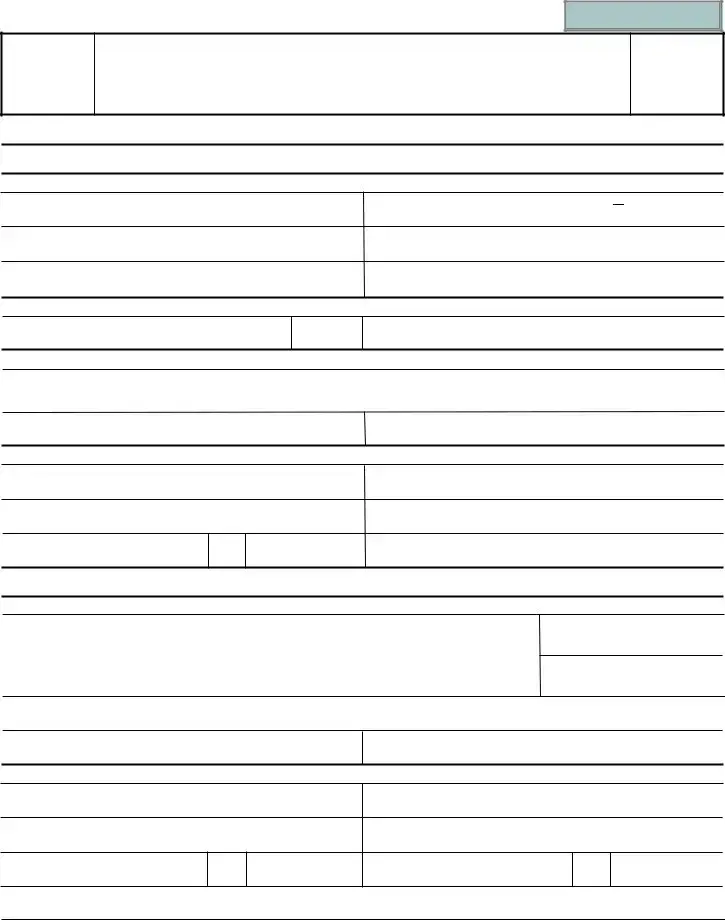What is the DMV TC-123 form used for?
The DMV TC-123 form is an application for obtaining a duplicate title for a vehicle in the state of Utah. This form is necessary when the original title has been lost, stolen, mutilated, or rendered illegible. By completing and submitting this form, vehicle owners certify that they have not endorsed or transferred the original title and seek a duplicate to ensure they remain compliant with vehicle ownership requirements.
What information do I need to provide on the TC-123 form?
To complete the TC-123 form, you will need to provide several important pieces of information. First, include your name and contact information, as well as the vehicle's identification number (VIN). Additional details such as the vehicle's make, model, year, and your signature are also required. If there is a co-owner or lien holder, their information must be included as well. Accuracy is essential; any missing or incorrect information may lead to the rejection of your application.
Is there a fee to submit the TC-123 form?
Yes, there is a fee associated with the TC-123 form application. As of now, a fee of $6.00 is required for processing the duplicate title request. It is important to include this fee when submitting your application to avoid delays in receiving the duplicate title.
How can I submit the TC-123 form?
The completed TC-123 form can be submitted to the Utah Division of Motor Vehicles. You can mail it to the designated address: PO Box 30412, Salt Lake City, UT 84130. For your convenience, you may also contact the DMV by phone at 801-297-7780 or 1-800-368-8824 for further assistance and guidance in the submission process.


 and list on back)
and list on back)